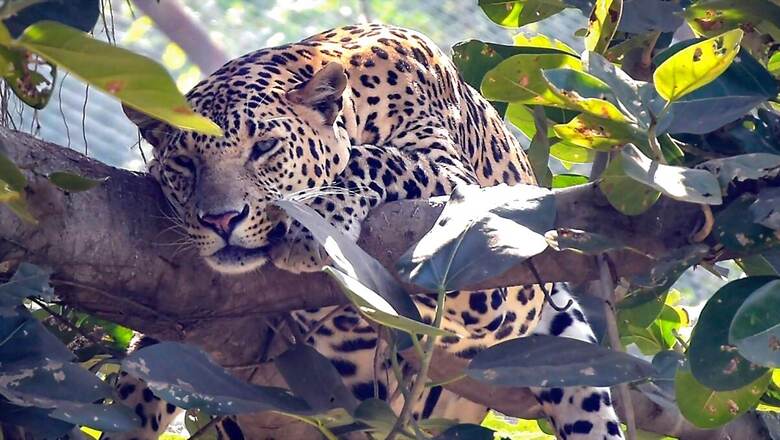Leopard Population Stabilises, But Big Cat Numbers Record Decline in Shivalik Hills, Gangetic Plains

views
The leopard population in India seems to have stabilised with an estimated 13,874 in 2022, as compared to 2018 when their numbers were around 12,852 and, in 2014, when it was 7,910. But, there are concerns over the big cat’s declining numbers in Shivalik Hills and Gangetic Plains, shows the latest ‘Status of Leopards’ report released by environment minister Bhupender Yadav on Thursday.
According to the survey, the leopard population has dropped by at least 3.4 percent per year across the Shivalik Hills and Gangetic Plains – their estimated numbers stand at 1,109 in 2022 as compared to 1,253 in 2018 in these regions.
Though widely distributed and adaptable, leopards are facing a rising threat due to large-scale habitat loss and human-wildlife conflict across states. The forested landscapes of central India, however, have shown a slight increase in their numbers from 8,071 in 2018 to 8,820 in 2022. But, the area sampled in 2022 has also increased as compared to 2018.
Madhya Pradesh has continued to show the largest estimated population of leopards at 3,907 (from 3,421 in 2018); followed by 1,985 in Maharashtra (from 1,690 in 2018); 1,879 in Karnataka (from 1,783 in 2018); and 1,070 in Tamil Nadu (from 868 in 2018). While numbers of the big cat have increased in Uttar Pradesh, Uttarakhand has recorded a decline.
The massive survey exercise focused only on forested habitats in 18 tiger states, covering four major conservation landscapes. The non-forested habitats like coffee and tea plantations and other land uses where leopards are known to dwell, arid and high Himalayas above 2,000 mean sea level (approx 30% area) were not sampled for leopards.
Hence, Nagarajunasagar Srisailam in Andhra Pradesh followed by Panna and Satpura in Madhya Pradesh emerged as the tiger reserves or sites with highest leopard population estimate as per the survey.
What do the findings reveal?
“The findings underscore the critical role of protected areas in conserving leopard populations. While tiger reserves serve as important strongholds, addressing conservation gaps outside protected areas is equally vital. Rising incidents of conflict pose a challenge for both leopards and communities,” said the environment ministry.
Leopards are also classified as ‘vulnerable’ under the IUCN Red List. One of the most adaptable carnivorous species, their survival outside protected areas and human-dominated landscapes has become increasingly important in wake of recent poaching incidents and man-animal conflicts.
Wildlife experts have consistently underscored the need to enhance habitat protection and mitigate the increasing human-wildlife conflicts. Long-term studies show that the leopard population has, in fact, declined by 75 to 90 percent across different habitats in the Indian subcontinent in the last 120 to 200 years.
The carnivore faces rising threats of large-scale habitat loss, human-wildlife conflict, and poaching. The animal is listed in Schedule I of the Wild Life (Protection) Act, 1972, where it is accorded the highest degree of legal protection from hunting. It is seen as a co-predator in its habitat range, and most of the leopard habitats in India are also part of tiger reserves.
The environment ministry provides financial aid to the tiger reserves under the centrally sponsored scheme, ‘Project Tiger’, for their protection and conservation.
How was the survey carried out?
The Fifth Cycle Leopard Population Estimation was carried out by the National Tiger Conservation Authority (NTCA) and Wildlife Institute of India (WII) in collaboration with state forest departments, as part of the quadrennial ‘Monitoring of tiger, co-predators, prey and their habitat’ exercise in tiger-range states.
The teams conducted a foot survey spanning 6,41,449 km to estimate carnivore signs and prey abundance. Camera traps were placed at 32,803 locations, which led to a total of 4,70,81,881 photographs, resulting in 85,488 photo-captures of leopards. The overall process combined camera trapping, habitat analysis, and population modelling.
















Comments
0 comment